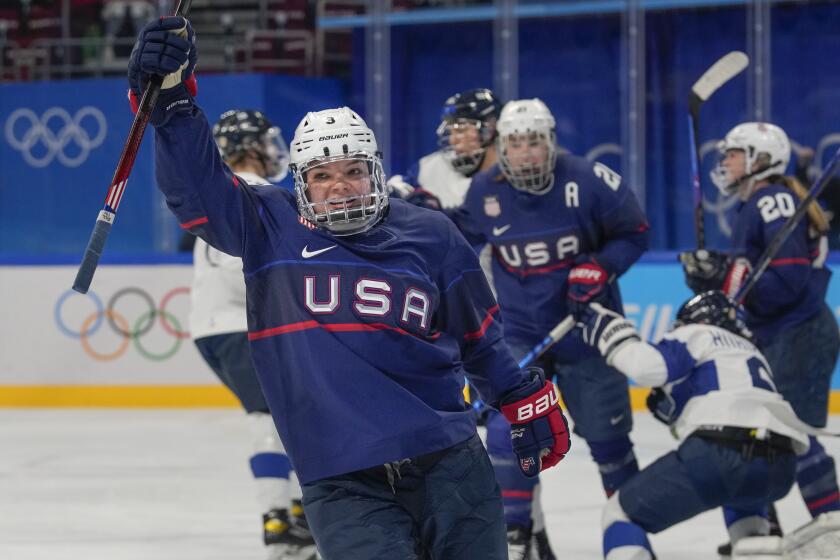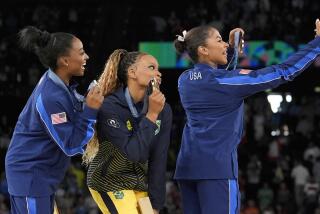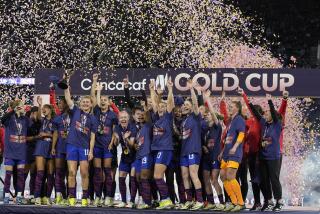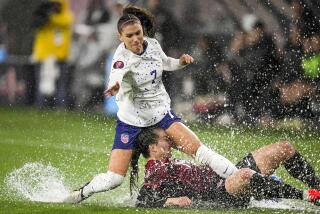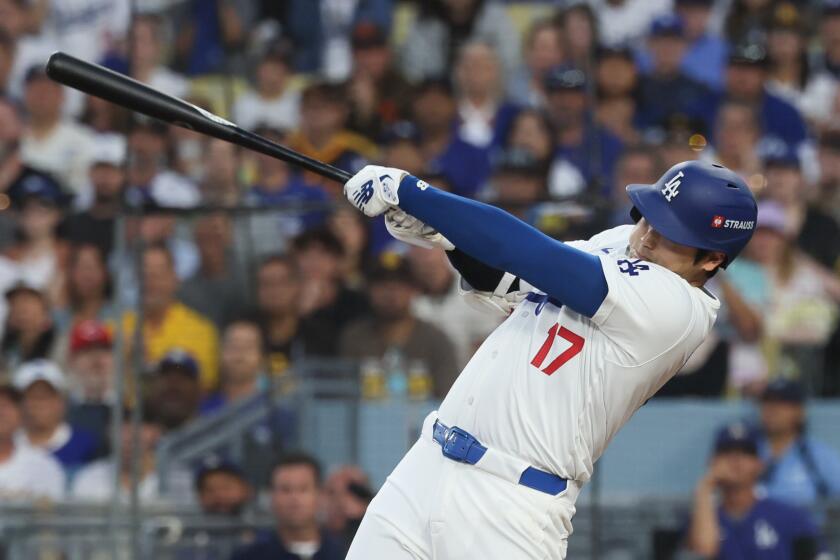Column: U.S.-Canada Rivalry Series shows how women’s hockey needs more support to flourish
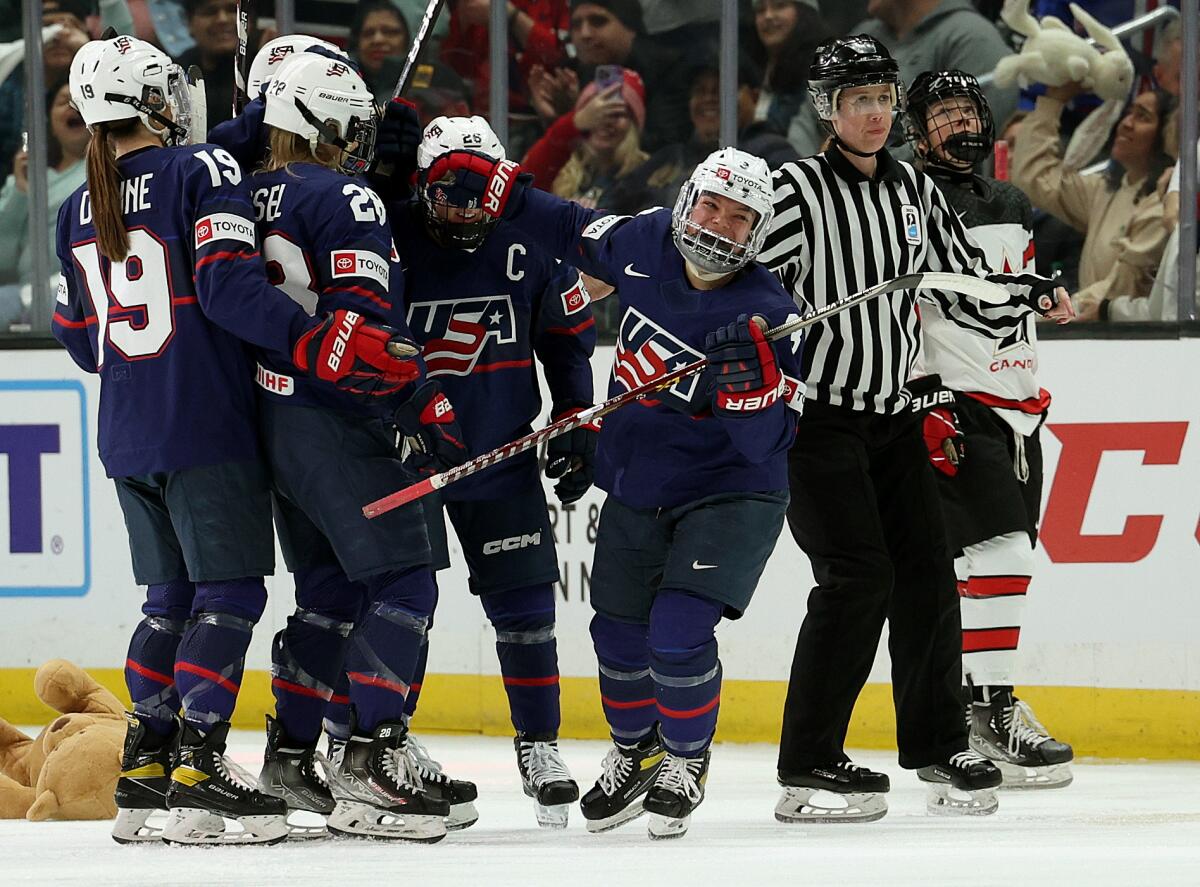
- Share via
Hope sounded like high-pitched shrieks.
Dreams looked like the awestruck smiles of the kids wearing hockey jerseys and shirts and holding encouraging signs at Crypto.com Arena on Monday while the U.S. women’s hockey team faced Canada in the latest edition of one of the fiercest rivalries in sports. Not in women’s sports — in all sports.
The Americans and Canadians are the class of women’s hockey, which pops into public consciousness only during the Winter Olympics. They never disappoint. Their great goaltending acrobatics and clutch scoring produce exhaustingly dramatic matchups at the Olympics and world championships. They shine because of their talent and competitiveness and their persistence despite having been told as kids they shouldn’t play hockey, they were an annoyance, that coaching them would waste time better spent on guiding boys.
It’s during the four years between Olympics, when female hockey players are scrambling for adequate resources and working to establish a stable professional league, that those who govern the game continue to drop the ball when they should be dropping the puck.
USA’s Cayla Barnes has won medals and championships but Monday in a Rivalry Series game against Canada she finally gets to play in her SoCal homeland.
The U.S. women’s national team had to threaten to boycott the 2017 World Championships until USA Hockey boosted its pay and promised to give the team much-needed youth development programs and more chances to showcase its extraordinary talent. From that came the U.S.-Canada Rivalry Series, extended this year to seven games but still not nearly long enough to promote awareness of who the players are and what they do — and that they constantly must work for a better hockey future between turns on the international stage.
“It’s every day. And I wish there were more opportunities for people to see what that every day looks like, for the game to be set up a little bit more sustainably for women to continue to play in this game,” said Kendall Coyne Schofield, captain of the U.S. team that lost to Canada in the Beijing Olympic gold medal game in February.
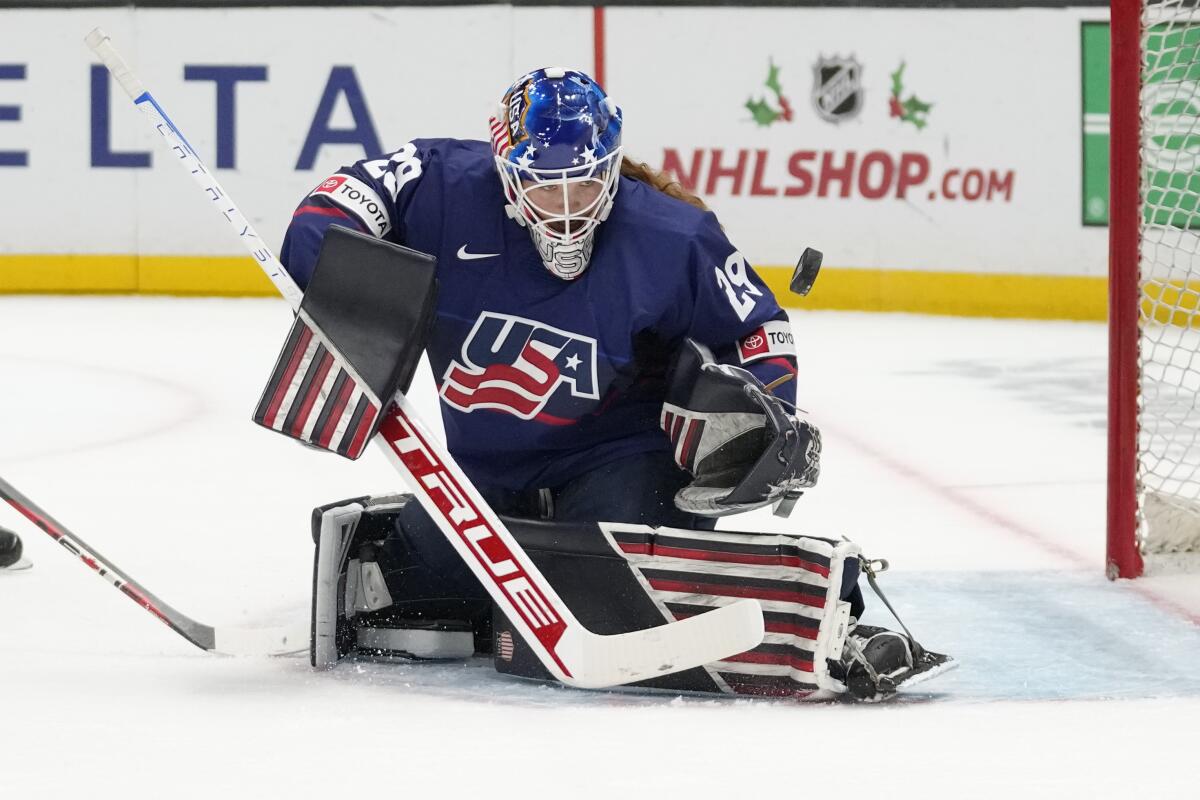
“It’s something that crosses my mind every day. Our game in Vegas [before their stop in Los Angeles] was great, but do you know how incredible it would be if our hands weren’t tied and our feet weren’t tied with the lack of resources that we often have in between events?”
Monday’s game, a 3-2 overtime win for Canada, was the fifth in the series, which will resume in Canada in February. The crowd at Crypto.com Arena was lively, initiating chants and singing and roaring with hometown pride when defenseman Cayla Barnes of Eastvale scored Team USA’s first goal.
“It was great. I thought the crowd was awesome. Had a lot of energy,” Barnes said. “It’s the first time I got to play at home, so super fun. I had family and friends in the stands. So, it was a great experience overall.”
During a busy holiday week, for an event scheduled about a month ago, the attendance of about 8,640 wasn’t bad. But it wasn’t as good as these women deserved.
They should have played in a fuller house. Players on both teams should have been seen and heard everywhere around L.A., via every means of promoting a singular sports event. How can you know if there’s an audience for a sport if people aren’t made aware it exists, and that it’s nearby?
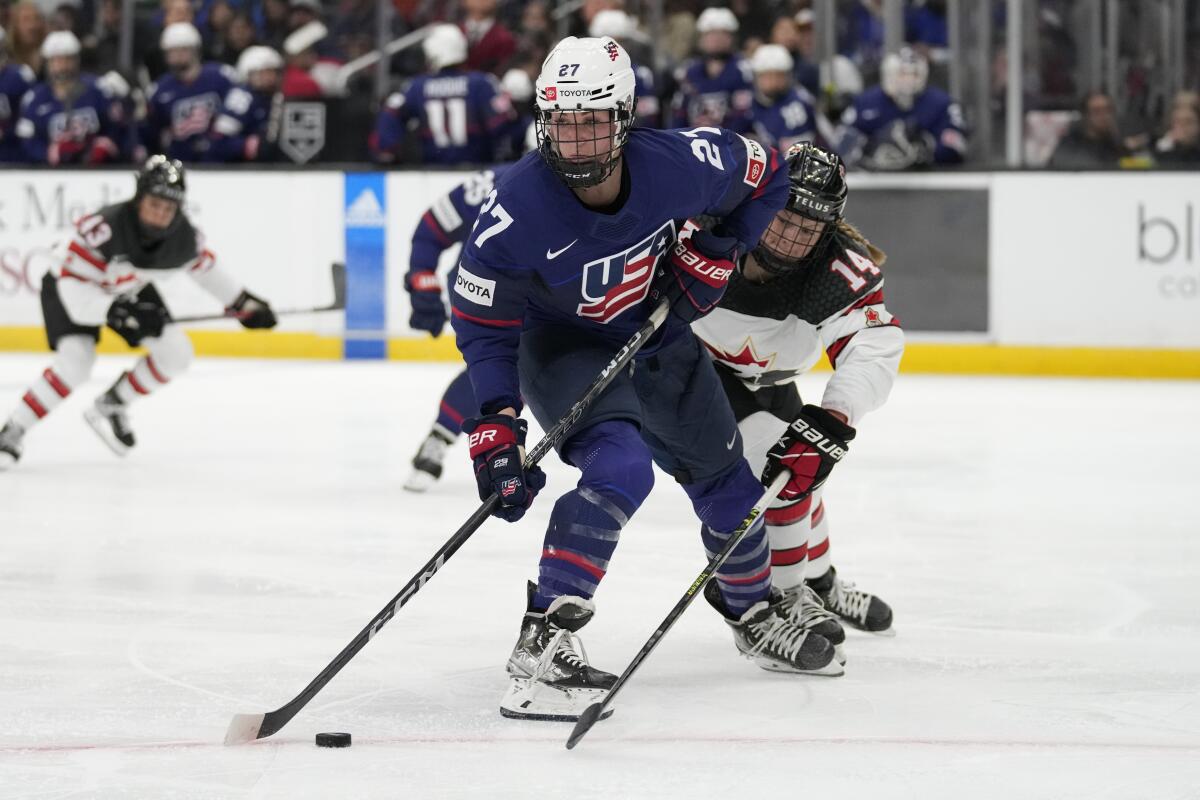
How do you know you can be it if you can’t see it?
“However many young girls are there, you never know who the next Hilary Knight or Kendall Coyne is going to be, up in the seats,” said U.S. coach John Wroblewski, who lives in the South Bay.
“Watching this tour, watching this series, it’s so much more than just filling an arena. It has so much to do with being able to inspire not only the next wave of women’s hockey players, but fans of the game and people who are going to love the game.”
College hockey has been a great feeder for the Canadian and American women’s teams, as well as for other nations that hope to break that north American stranglehold. “Our college players, and that infrastructure, is pretty solid. But once you walk across that stage it’s a really bittersweet moment,” Coyne Schofield said. “Because the locker room, the ice daily, the weight room daily that you wake up and have alongside your education, it just vanishes.”
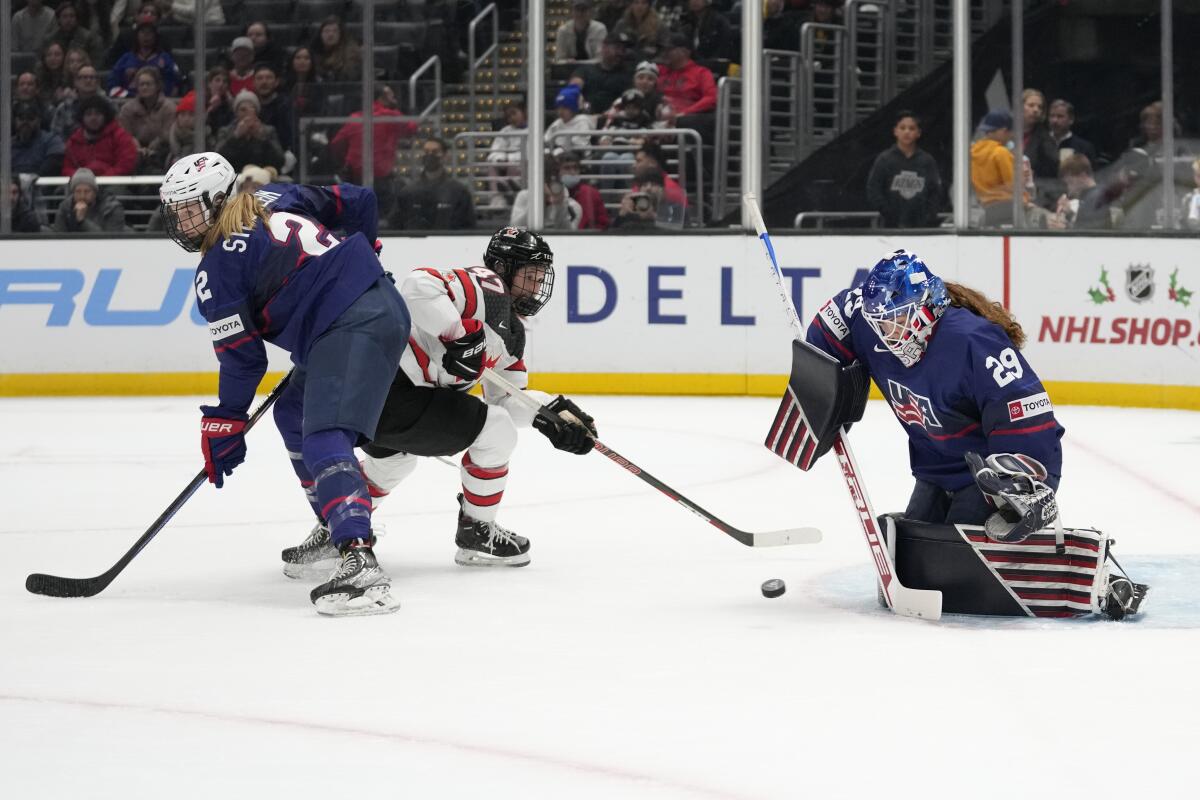
The landscape for women’s professional hockey is fractured into two camps. The Premier Hockey Federation, formerly the National Women’s Hockey League, has seven independently owned teams and has partnered with a handful of NHL clubs. There’s also the Professional Women’s Hockey Players’ Assn., which includes most of the top Americans and Canadians. It stages the Dream Gap tour and events in the U.S. and Canada. Tennis legend and activist Billie Jean King and Dodgers chairman Mark Walter have had discussions with the PWHPA.
NHL Commissioner Gary Bettman has said he’d let the women’s hockey leagues sort out their issues before he’d align with one. “We actively support both North American women’s professional hockey organizations, and that support has increased over time,” deputy commissioner Bill Daly said via email. “Our position with respect to operational support remains the same.”
The popularity of women’s basketball and soccer has climbed, as measured by broadcast ratings and attendance. Until women’s hockey gets enough marketing support to explore whether a pro league is viable, the players will have to be content with the Olympic spotlight and occasional big moments like they enjoyed on Monday.
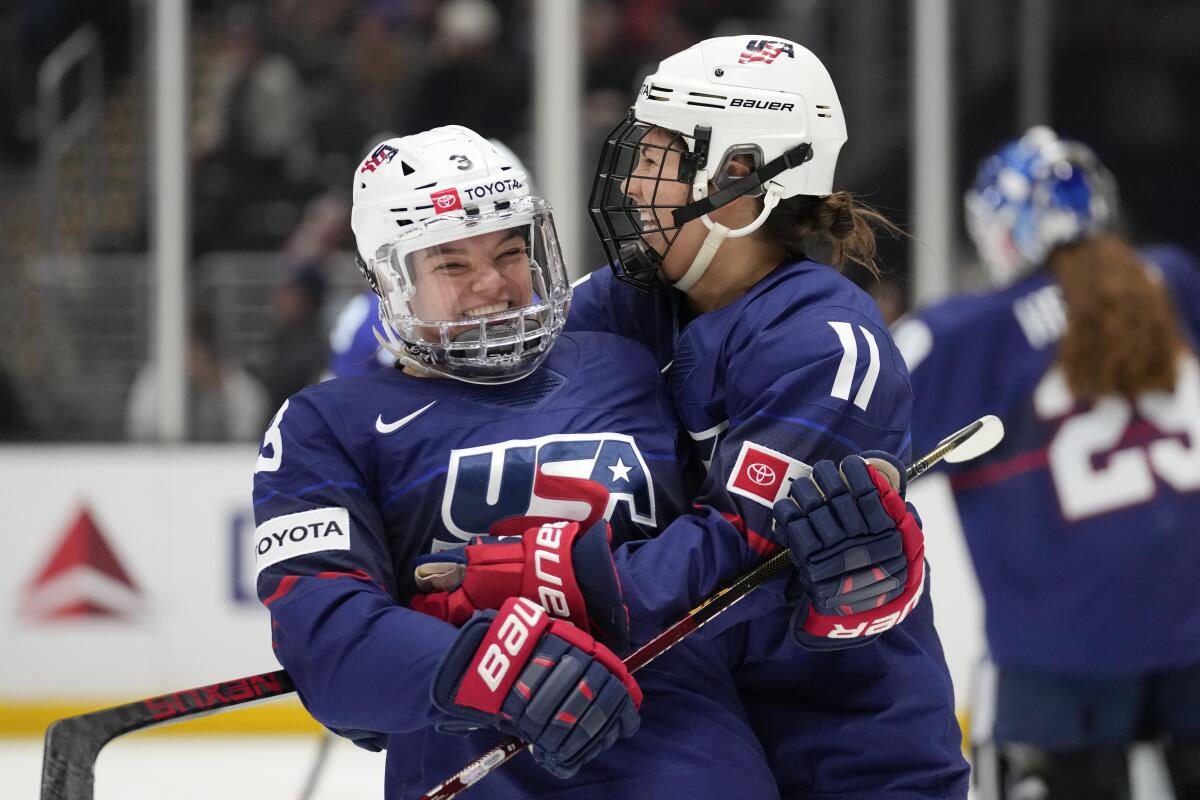
“One of the things with women’s sports is you don’t have consistency,” Knight, the all-time scoring leader in world championship play, said last weekend. “You know about a game maybe less than a month before — unfortunately that’s what we have going into Monday. Sometimes you can’t help it. But once we establish that consistency, you know where to find your favorite club, your favorite players playing night in and night out and you know it’s easier to find them, I think that’s really going to break the mold for women’s sports across the board, and hockey is going to be one of those forward-facing sports as well.”
For now, hopes and dreams live in shrieks and claps and chants for women who have earned that, and much more.
More to Read
Go beyond the scoreboard
Get the latest on L.A.'s teams in the daily Sports Report newsletter.
You may occasionally receive promotional content from the Los Angeles Times.

